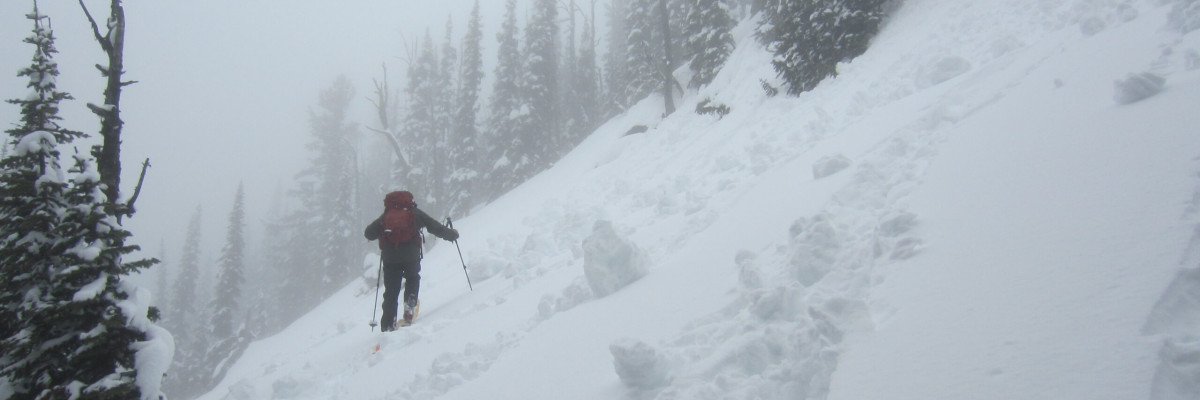On slopes above 7000 feet and steeper than 35 degrees the avalanche danger in the west central Montana backcountry is rated at moderate. It is possible to trigger small to moderately sized wet, loose slides. The chances of human triggered and natural wet releases will rise with today’s afternoon temperatures. Also in the higher, steep terrain, leeward aspects may harbor wind slabs from the storms that occurred earlier this week.
Good morning, this is Dudley Improta with the West Central Montana Avalanche Center’s advisory for Friday, March 27, 2015. This danger rating does not apply to operating ski areas and expires at midnight tonight. This is our last regularly scheduled advisory for the season.
Weather and Snowpack
Well, all it took to get up to a foot of snow in the mountains, was for the Avalanche Center to announce the end of the season and not issue a Tuesday advisory this week. If we had known it would be this easy, we would have done this in February.
It should be a pleasant day with dry conditions and near record high temperatures. Mountain temperatures are already well above freezing. Above 7000 feet, west and southwest winds are blowing 10-15mph and gusting in the 20’s.
Storms this week produced a welcome 8 to 12 inches of snow. We got a nice report from Downing Mountain Lodge on Wednesday about excellent riding conditions and elevated avalanche hazard in the Bitterroots. The main concerns were medium-sized, loose snow slides and wind slabs up to 10 inches. Steve and I toured in the Rattlesnakes yesterday and found the new snow has become a bit heavy and easily moves down the hill in loose, wet sluffs. These slides are substantial enough to trip up a day-dreaming skier and possibly cause a problem. The warm temperatures will increase the chances of a wet release.
Weather and Avalanche Outlook
Today may see temperatures 15 to 20 degrees (F) above normal. Warm temperatures will increase the chance of natural and triggered wet releases. Outdoor enthusiasts heading out for the weekend should not be lulled into complacency by today’s balmy weather. Cooler temperatures, lowering snow levels and strong ridgetop winds are forecast for Saturday. A modest amount of snow, 2 to 5 inches, is predicted in the mountains. With dropping temperatures, possible snow and increased wind, I would expect the chances for wet slides to decrease and the chances for wind slabs to increase.
Thanks!
This is our last regularly scheduled advisory for the season. We will issue a spring bulletin in the next few days. The West Central Montana Avalanche Center and missoulaavalanche.org (our non-profit friends group) sincerely appreciates the support we get from the west central Montana community.
Ride and ski safe. Have a great weekend.














